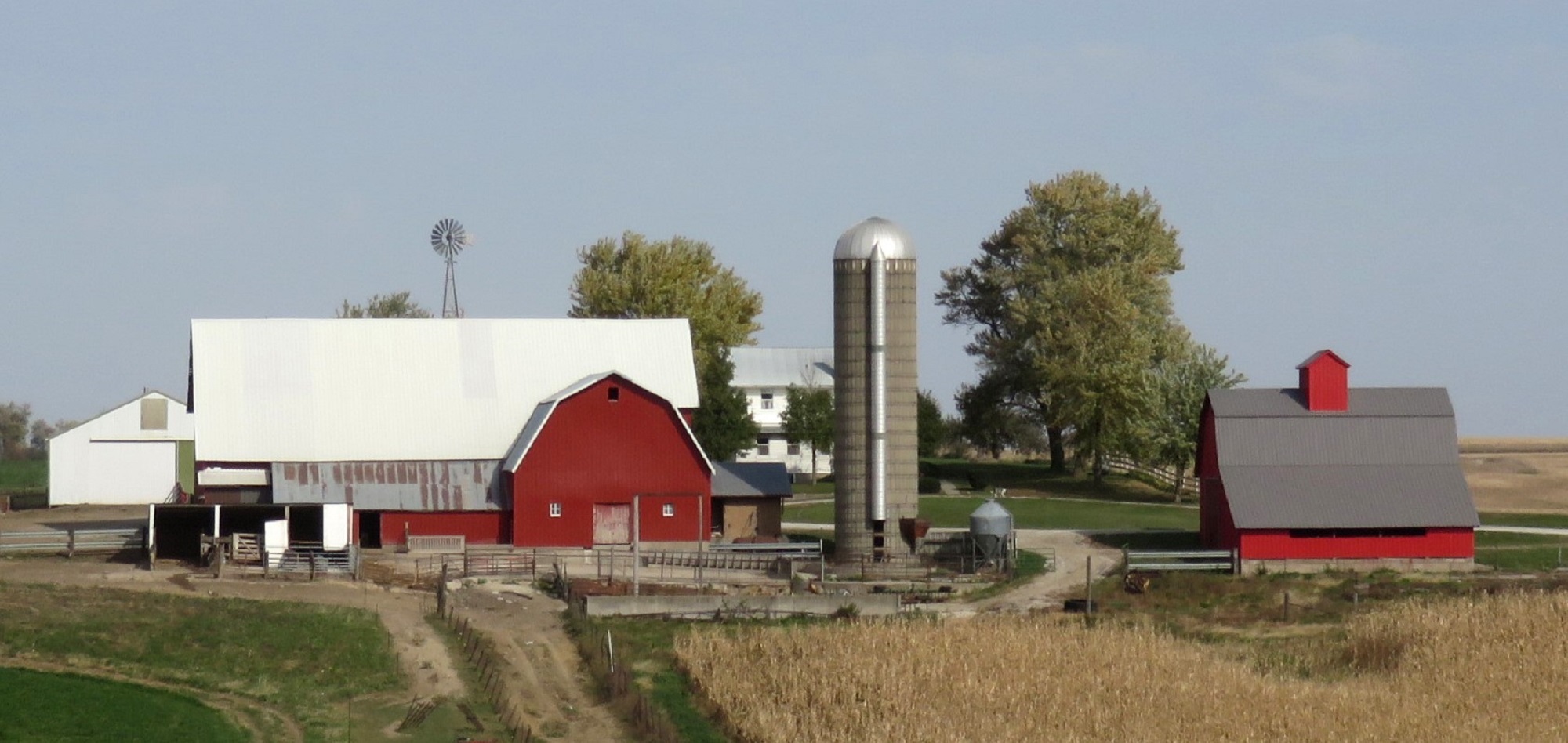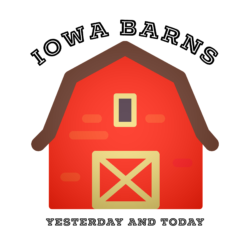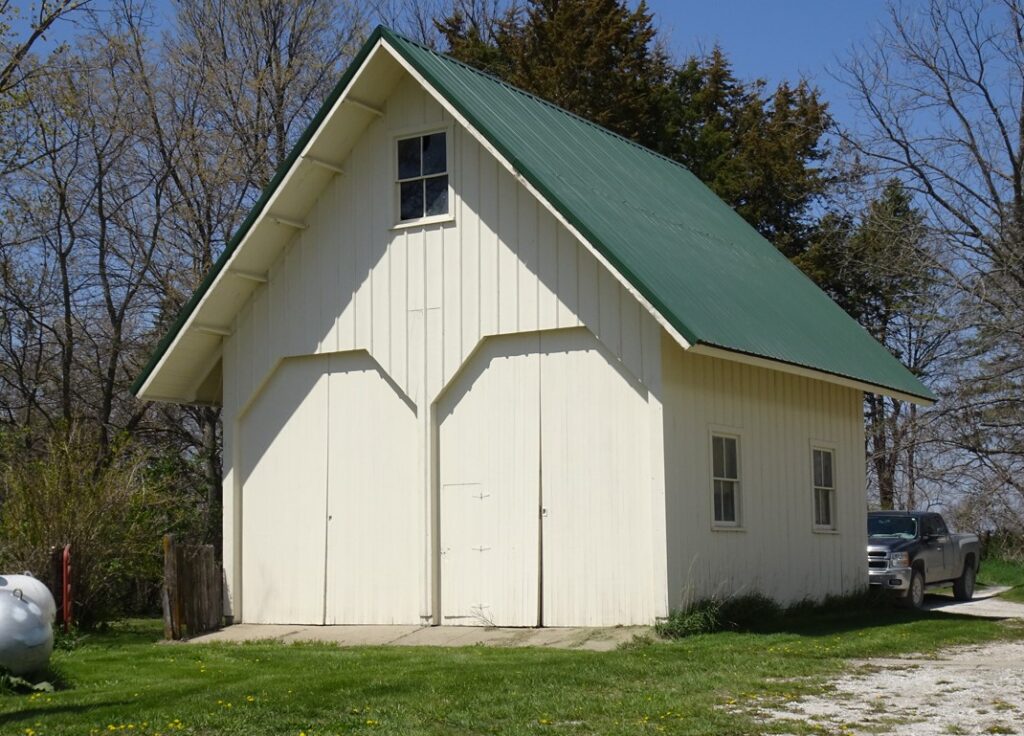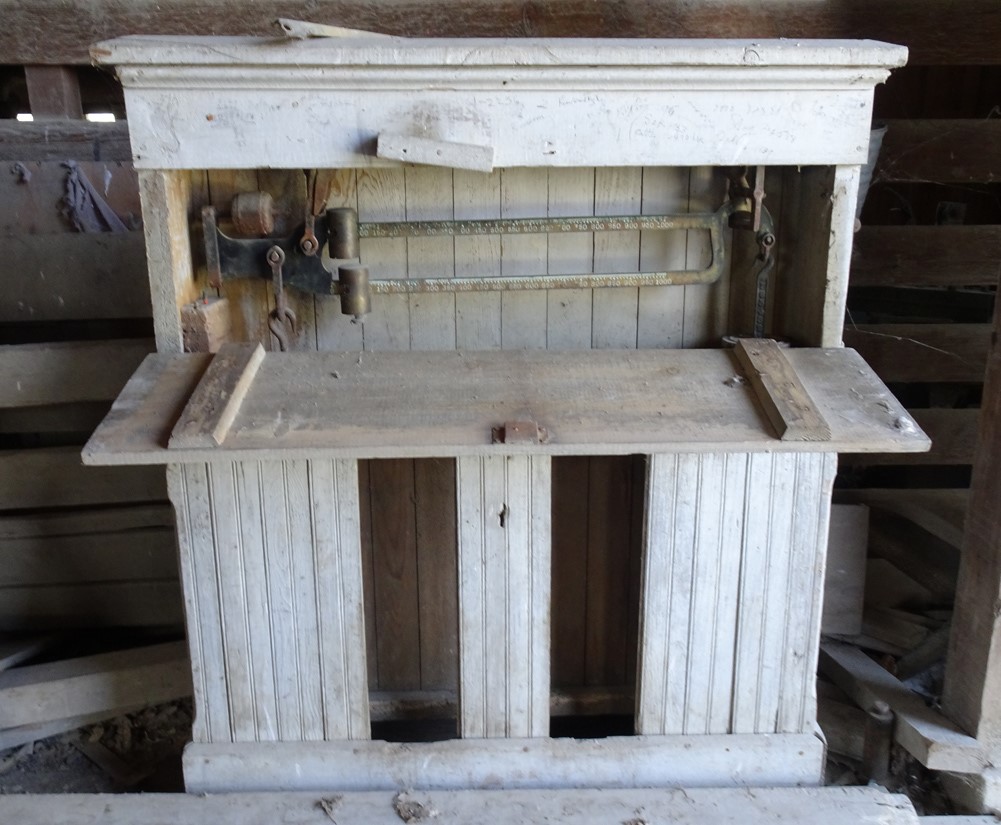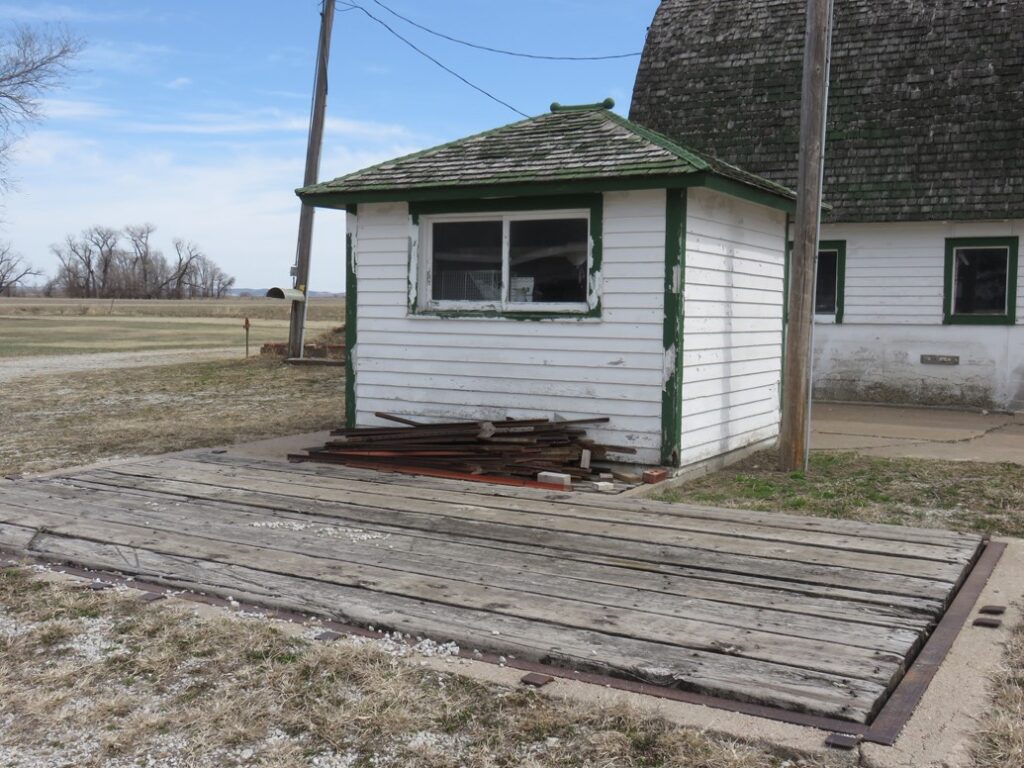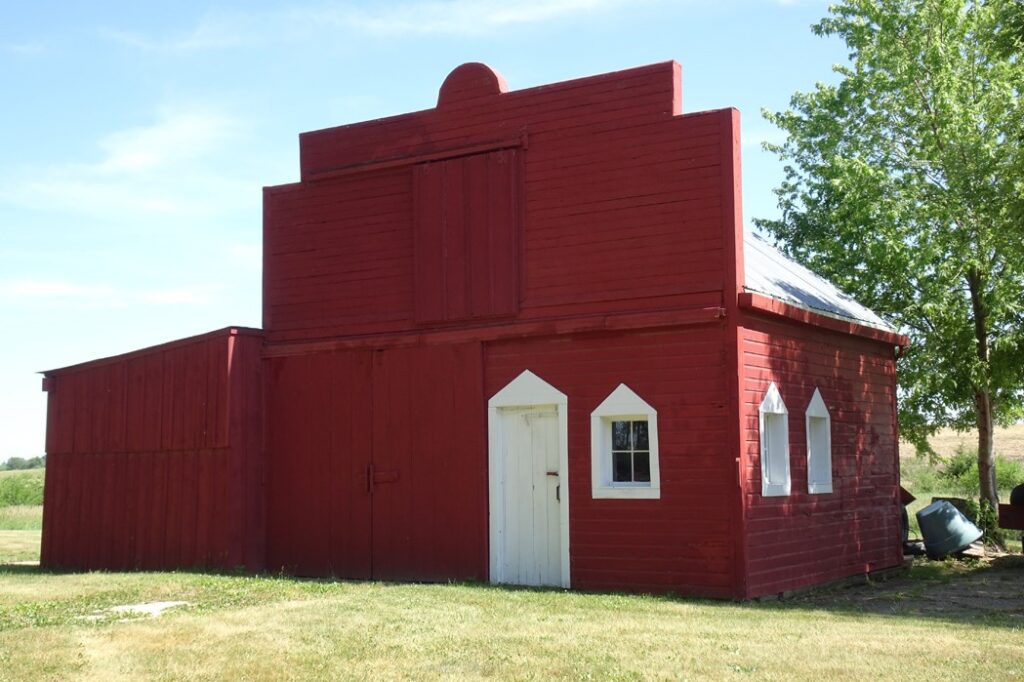Forty-two years ago this month there was an article about me in the Des Moines Sunday Register. I had received a small grant to study Iowa barns and promote the idea of saving them. Letters by the dozens soon made their way to my mailbox in Creston telling me about barns to visit, even several just addressed to “The Barn Lady, Creston, Iowa.” Five years and 300 programs later we moved to Omaha and the barn story slept until I retired from teaching in 2012. Six years later my book Iowa Barns yesterday and today was completed. The barn story by the “Barn Lady” continues bi-weekly with new updates and new stories.
Today the subject is threshing.
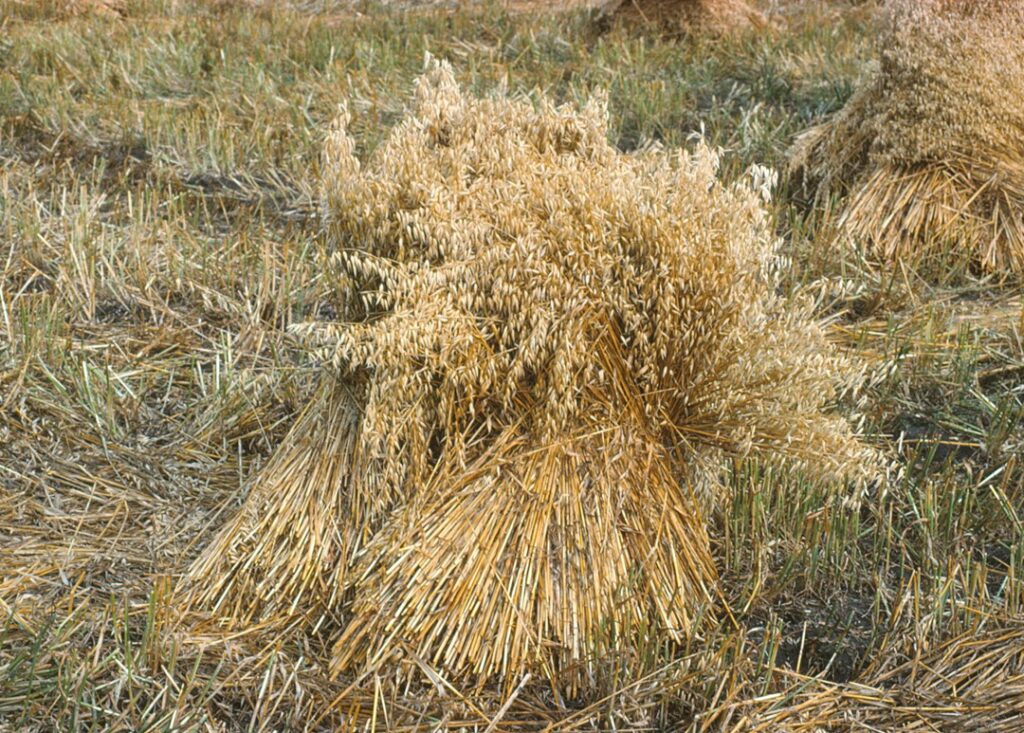
South of Monticello in Jones County is what is believed to be a threshing barn (2021 photo). The internal space in this small limestone barn is open from floor to ceiling, with space on both sides to store bundles of grain. Doors on the north and south provided ventilation to assist in blowing out the chaff. This barn is small, so flailing would have been the means of separation. In later times, animals, typically oxen, were tethered to a center post and walked in circles, their hooves separating the grain from the stems.
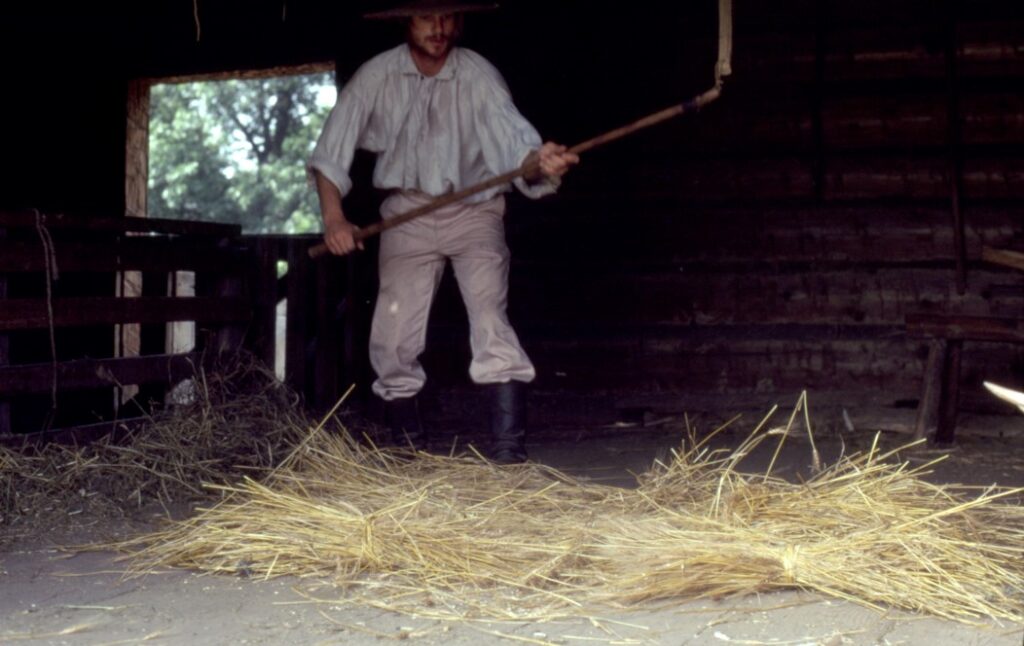
South of Monticello in Jones County is what is believed to be a threshing barn (2021 photo). The internal space in this small limestone barn is open from floor to ceiling, with space on both sides to store bundles of grain. Doors on the north and south provided ventilation to assist in blowing out the chaff. This barn is small, so flailing would have been the means of separation. In later times, animals, typically oxen, were tethered to a center post and walked in circles, their hooves separating the grain from the stems.
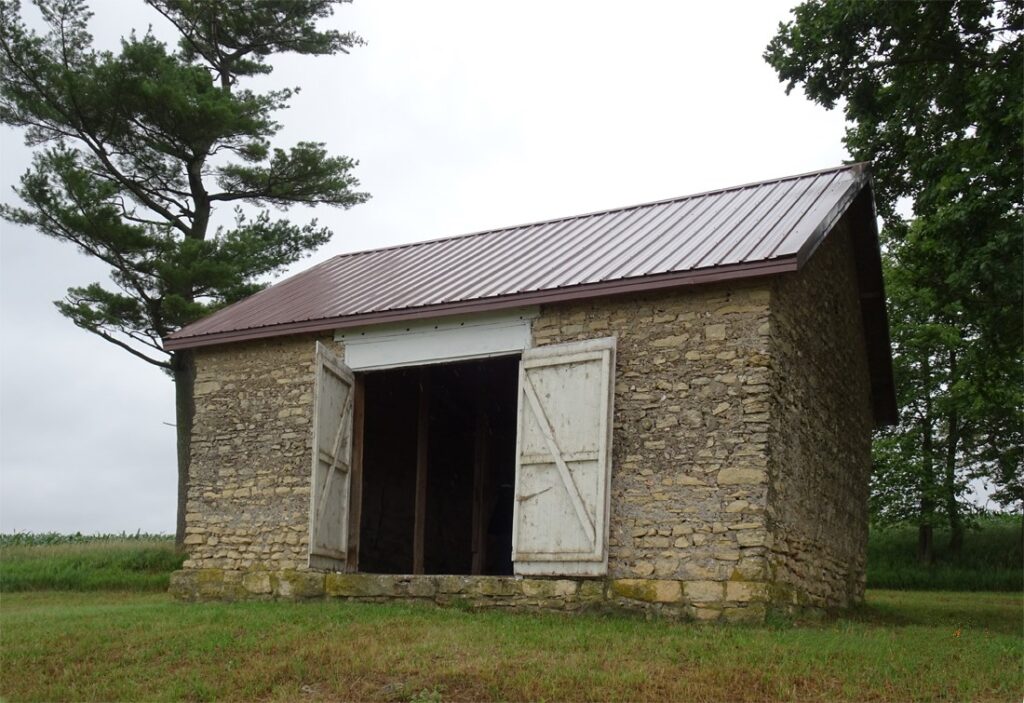
Today’s machinery combines the harvesting and separating of the grain as one operation. Of course, we call this machine a “combine.” Isn’t technology great?
